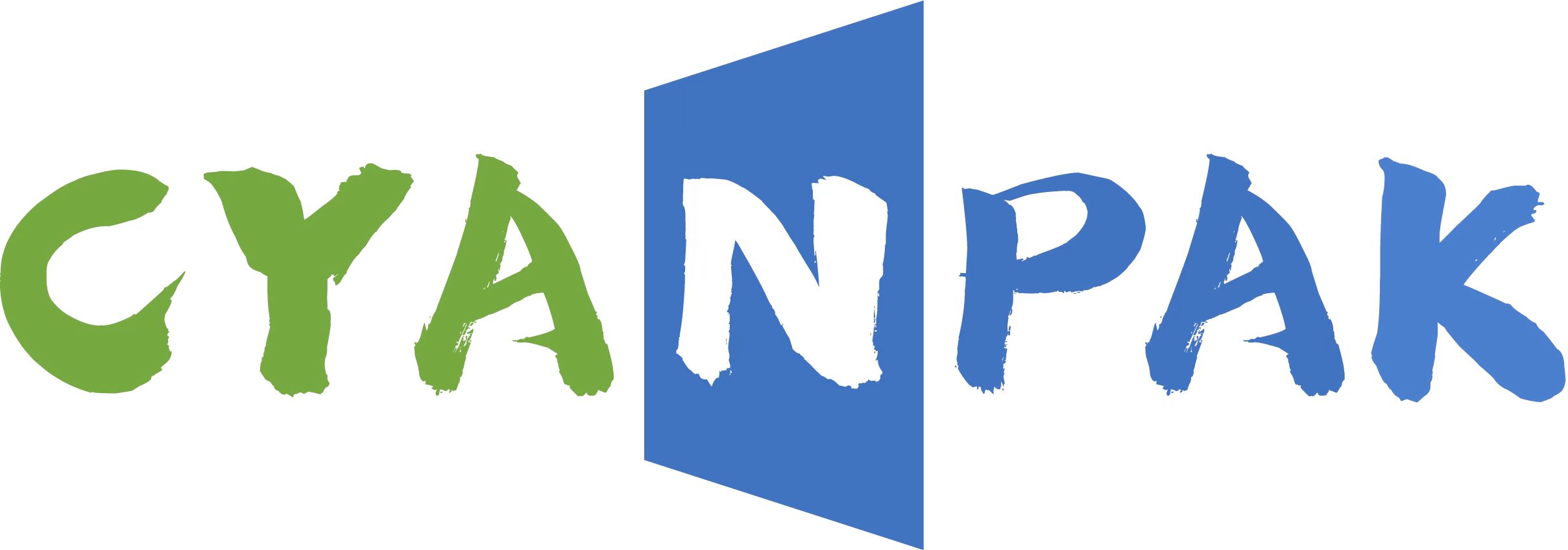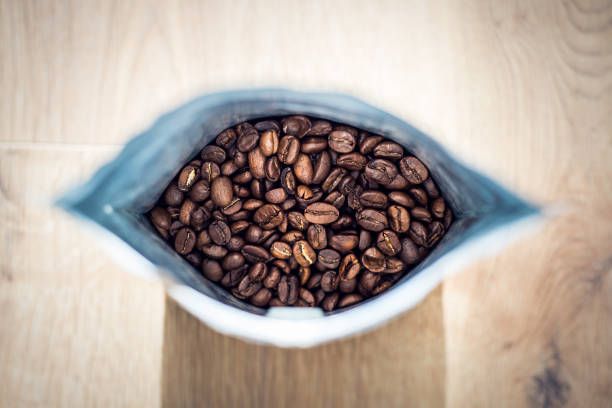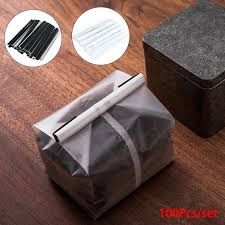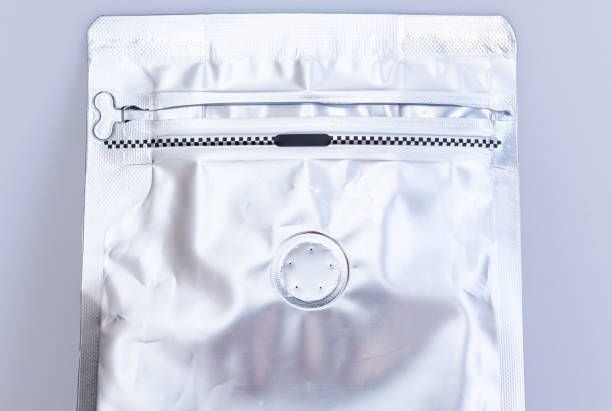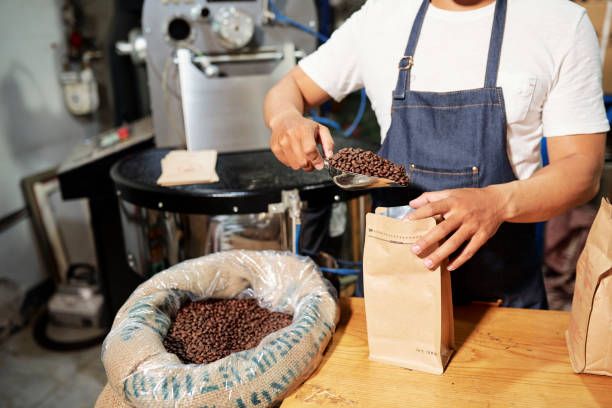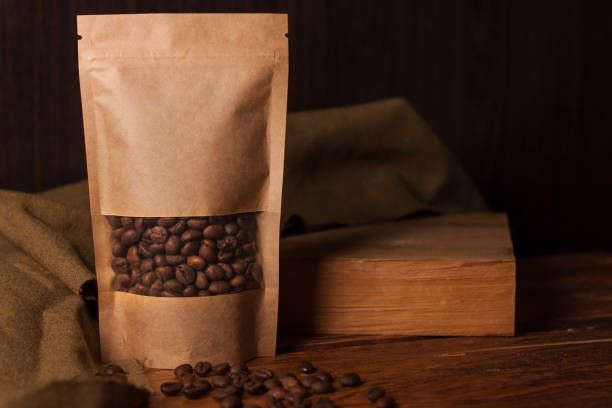Coffee will lose quality over time even if it is a shelf-stable product and can be consumed after its sell-by date.
Roasters must make sure that coffee is packaged and stored properly to maintain its origins, unique aromas, and flavors so that consumers can enjoy them.
Over 1,000 chemical elements are known to be present in coffee, which add to its flavor and aroma. Some of these chemicals may be lost through storage processes such gas diffusion or oxidation. This, in turn, frequently results in less consumer enjoyment.
Notably, spending money on quality packing supplies can help preserve a coffee’s qualities. However, the method used to make the packaging resealable is as crucial.
The most economical, widely available, and simple-to-use methods for roasters to close coffee bags or pouches are tin ties and zippers. However, they don’t function in the same way when it comes to maintaining the freshness of the coffee.
coffee packaging and tin ties
A farmer who worked in the bread industry popularized tin ties, also known as twist ties or bag ties, for wider use in the 1960s.
American Charles Elmore Burford sealed packaged bread loaves with wire ties to maintain their freshness.
A short piece of coated wire that was thin was used for this. This wire, which is still in use today, could be wound around the end of a bread package and re-tied anytime the bag was opened.
The majority of large-scale packagers purchase vertical automated Form Fill Seal equipment to fill empty bags. Additionally, these devices unwind, cut, and attach a length of tin tie to the top of an open bag.
The bag is then sealed shut to give it a flat or cathedral top opening after the machine folds each end of the attached tin tie.
Smaller companies can buy pre-cut rolls with perforations or tin ties and glue them to the bags.
Tin ties can be produced from a single substance or a blend of plastic, paper, and metal. They are a very cost-effective alternative for many companies, including coffee roasters.
Notably, many large-scale bread producers are switching back to using tin ties instead of plastic tags. This is an efficient approach to save money and win over an increasing number of environmentally concerned customers.
Tin ties are also more likely to seal a bag without causing damage. Tin ties can be manually fastened to coffee bags, which can save expenses for many roasters. Additionally, they can be reused after being taken out of the box.
Tin ties can be difficult to recycle depending on the materials employed in the manufacturing process. This is so because many are constructed with a core of stainless or galvanised steel and a cover made of polyethylene, plastic, or paper.
Finally, tin ties can’t guarantee a 100 percent airtight seal. This is adequate for often purchased and consumed commodities like bread. A tin tie might not be the best solution for a bag of coffee that needs to stay fresh for several weeks.
coffee packing and zippers
Metal zippers have been a common component of clothes for decades, but Steven Ausnit is responsible for the use of a sipper to make resealable packaging.
Ausnit, the inventor of Ziploc brand bags, observed in the 1950s that consumers found the zippered bags his business manufactured to be perplexing. Instead of opening and resealing the bag, a lot of people just ripped the zip off.
He upgraded to press-to-close zippers and interlocking plastic track during the following few decades. The zip was then incorporated into bags using Japanese technology, making it more widely available and less expensive.
Single-track zippers are still often used in coffee packaging, although many companies still use zipper profiles to make resealable product packaging.
These fit into a track on the other side using a single piece of cloth that protrudes from within the top of the bag. Some might have multiple tracks for increased sturdiness.
They are typically included in filled and sealed coffee bags. The bag’s top should be cut open, and users are urged to use the bottom zipper to shut it again.
Zippers can completely seal out air, water, and oxygen. However, wet products or those that must remain dry when submerged in water are typically stored at this level.
Despite this, zippers can still provide a tight seal that prevents oxygen and moisture from entering, extending the life of coffee.
It’s important to remember that coffee bags can have recycling concerns similar to tin tie bags because so many zippers are put into them.
selecting the ideal coffee packing solution
Many roasters frequently employ a combination of both because there are few laboratory studies comparing the effectiveness of tin ties and zippers for sealing coffee packaging.
Tin ties are a cost-effective alternative that might work for smaller roasters. The amount of coffee that will be packaged, however, will be a determining factor.
A tin tie can offer adequate sealing for a short while if you’re utilizing degassing valves and packing relatively small volumes right away after roasting.
In contrast, a zipper might be ideal for storing bigger amounts of coffee because it will be opened and shut more frequently.
Roasters must also keep in mind that, regardless of the material of the bag, adding a tie or zipper can make recycling coffee packaging more difficult.
As a result, roasters must ensure that customers may either remove the tin ties and zippers for recycling or have a mechanism to recycle the bag as is.
Some coffee businesses and roasters prefer to handle this themselves by giving patrons a discount in exchange for their used bags. Management can then guarantee that the packaging is recycled effectively.
One of the numerous choices roasters will have to make along the way in regards to packaging is how to reseal coffee bags.
From pocket and loop zippers to tear notches and zip locks, Cyan Pak can assist you in selecting the optimum resealing solution for your coffee bags.
Our recyclable, compostable, and biodegradable coffee bags may incorporate all of our resealable features. They are produced from 100% recyclable materials like kraft paper, rice paper, LDPE, and lined with PLA.
By offering low minimum order quantities (MOQ) on both recyclable and conventional choices, we also provide the ideal remedy for micro-roasters.
Get in touch with us for more information about environmentally friendly coffee packaging.
Post time: May-18-2023
